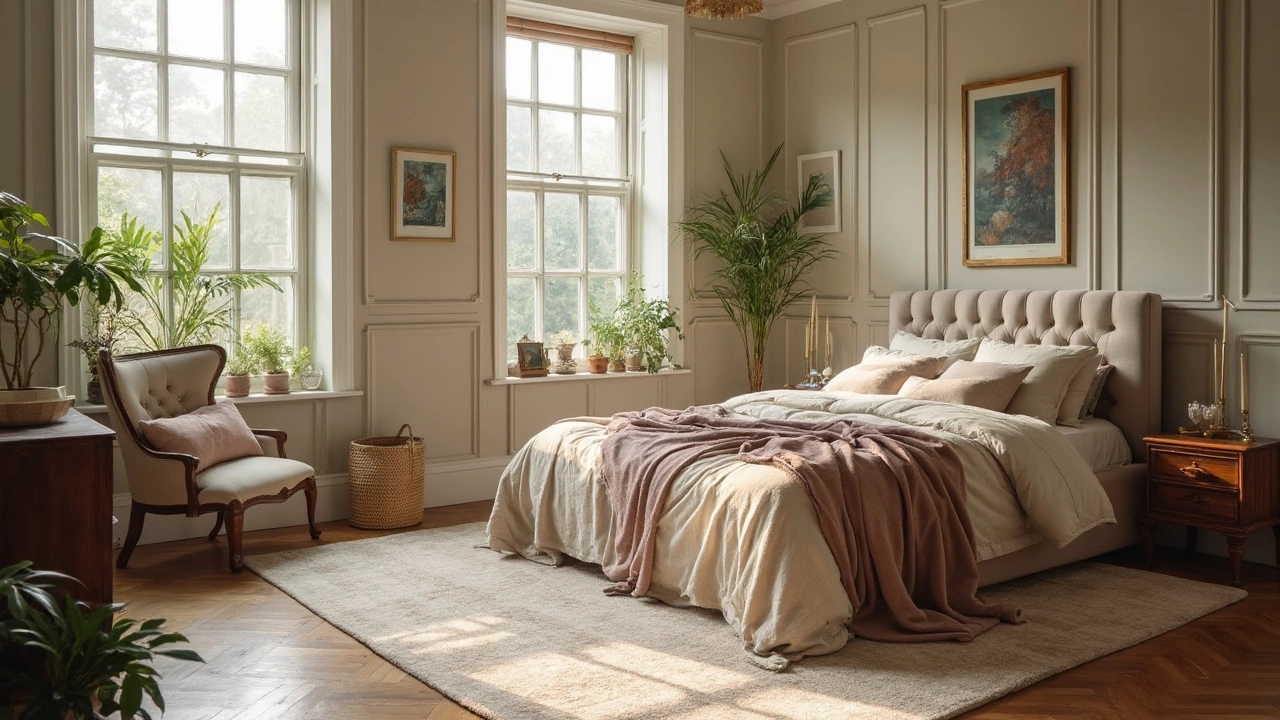Rug Under Bed: Simple Ways to Boost Comfort and Style
If you’ve ever stepped out of bed onto a cold floor, you know the feeling – a quick shiver and a wish for a softer landing. A rug under the bed solves that in one easy move. It adds a warm cushion for your feet, hides drafts, and instantly upgrades the look of the room. And because Eco Harmony Home focuses on sustainable choices, you can pick a rug that’s good for your bedroom and the planet.
How to Pick the Right Size
The biggest mistake people make is grabbing a rug that’s either too small or too big. A good rule of thumb is to let the rug extend at least 12‑18 inches beyond the sides of the bed. For a queen‑size bed, a 6×9 ft rug works nicely; for a double or full‑size bed, a 5×8 ft rug usually fits just right. If you have a king‑size bed, go for an 8×10 ft rug and make sure it’s centered. This layout keeps the rug visible from the side and gives you a solid surface to step onto when you get up.
Measure your bedroom first. Measure the distance from the headboard to the nearest wall and from the footboard to the opposite wall. Then, subtract the rug’s dimensions to see how much floor will still be exposed. A little space around the rug helps the room feel balanced and prevents the floor from looking cramped.
Eco‑Friendly Rug Options
Choosing an eco‑friendly rug means you’re supporting better farming, lower chemical use, and fair‑trade practices. Look for rugs made from natural fibers like jute, sisal, organic cotton, or wool. These materials break down naturally and usually need fewer pesticides to grow. Many of our suppliers also use recycled polyester fibers that take old plastic bottles and turn them into soft, durable rugs.
When you shop, check the label for certifications such as GOTS (Global Organic Textile Standard) or Fair Trade. Those tags guarantee the rug meets strict environmental and social criteria. If you love a low‑maintenance option, go for a jute rug – it’s sturdy, natural, and adds an earthy texture that pairs well with wood floors and neutral bedding.
Another tip: pick a light‑colored rug if you want to keep the room feeling airy. Light shades reflect more light, making the space feel larger. Darker tones hide stains, which can be handy if you have kids or pets. Either way, a sustainably sourced rug will last longer, meaning you won’t need to replace it frequently – another win for the environment.
Now that you know size and material, it’s time to think about placement. If your bed sits on a carpet, you can still add a smaller rug underneath the bed to create a layered look. Just make sure the top rug is flat‑woven or low‑pile so it doesn’t interfere with the bed frame. For rooms with hardwood, a flat‑weave rug adds a gentle cushion without catching on wheels or legs.
Finally, care for your rug the right way. Most natural fibers respond well to a gentle vacuum once a week. Spot‑clean spills immediately with a damp cloth; avoid harsh chemicals that could damage the fibers. Rotate the rug every few months to keep wear even. With the right upkeep, your rug stays fresh for years.
Putting a rug under your bed is a small change that makes a big difference. It gives you a warm step in the morning, hides floor imperfections, and adds a splash of style that reflects your eco‑friendly values. Try one of the sustainable options we recommend, and you’ll feel the comfort every time you swing your legs out of bed.
-

Rug Under the Bed: Why It Matters and How to Get It Right
Wondering if a rug under the bed is worth it? This article explains the real purpose of bedroom rugs, what difference they make, and clever tips for picking the right size and style. Get practical advice for arranging a rug in any room, even tiny apartments. Plus, learn why skipping a bedroom rug might be a missed comfort opportunity. Make your bedroom both cozy and stylish by mastering this underrated decor move.
